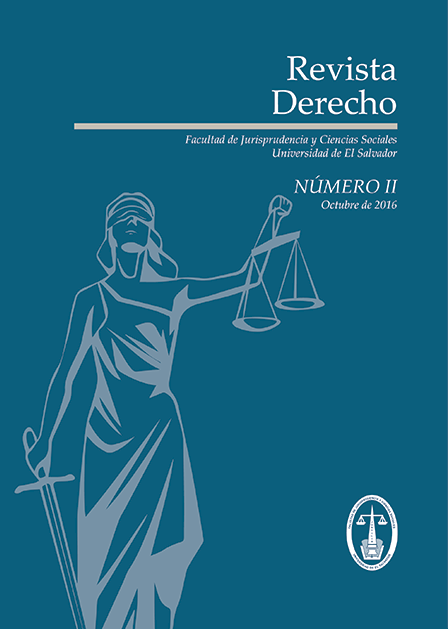Justice policy, citizen security and coexistence in perspective: A critical analysis of the causes of violence and insecurity in El Salvador
Keywords:
Security Citizen Policy, Violence, Insecurity, Criminality, Insurance El Salvador Plan, National Strategy for Violence PreventionAbstract
In a brief and concise way, this article presents a study of the most determinants in the generation of violence and crime in El Salvador from a Latin American approach in the first instance, then an analysis at the sub regional level is developed and eventually the phenomenon is studied at the State level. The method used allows a review of the most illustrative data of the Salvadoran landscape during the last two administrations (2009 - 2014) and (2014 to present), a temporal delimitation is due solely to their vision and common political platform, i.e, because it’s about progressive governments court and that currently have exercised the institutional political power. In that sense, the socio-economic, institutional political factors are described in some detail and legal variables affecting the manifestations of crime and the most characteristic aspects of Citizen Security Policy that seeks to combat it, all with the aim for finding factors that may be susceptible to improvement, particularly in a context marked by the rampant increase in homicides in El Salvador.
Downloads
References
Luis Eduardo Ayala, et. al. “Estudio sobre la formulación e implementación de la política de seguridad ciudadana en El Salvador: Avances, retrocesos y desafíos” (Conferencia dictada en la Universidad Francisco Gavidia, 16 de julio de 2015).
Alessandro Baratta, Criminología crítica y crítica al Derecho Penal: Introducción a la sociología jurídico – penal (Buenos Aires, Siglo XXI Editores, 2004) 131 – 132.
Hugo Früling, La eficacia de las políticas públicas de seguridad ciudadana en América Latina y el Caribe: Cómo medirla y mejorarla (Banco Interamericano de Desarrollo BID, 2012) 1-2.
Óscar A. Fernández, “La seguridad pública en El Salvador: Un fenómeno complejo que requiere respuestas integrales” en Seguridad regional en América Latina y el Caribe: Anuario 2013 (Bogotá: Fundación Friedrich Ebert Stiftung, 2013).
Gino Costa, “La situación de la seguridad ciudadana en América Latina” en Revista electrónica de derechos humanos 31 (Ecuador: Universidad Andina Simón Bolívar, 2012).
Ministerio de Justicia y Seguridad Pública, Política Nacional de Justicia, Seguridad Pública y Convivencia (San Salvador, 2010) 7 – 9
William Pleitez, et. al, Informe de desarrollo humano 2013: Imaginar un nuevo país. Hacerlo posible (San Salvador, PNUD, 2013) 167 – 168.
Asociación Demográfica Salvadoreña, Encuesta Nacional de Salud Familiar (San Salvador, FESAL, 2008).
Oficina de Naciones Unidas contra la droga y el delito, Crimen y desarrollo en Centroamérica. Atrapados en la encrucijada (Nueva York, 2007).
PNUD, Armas de fuego y violencia (San Salvador, 2003).
Manuel Sevilla, Seguridad y Paz, un reto de país: Recomendaciones para una política de Seguridad Ciudadana en El Salvador (San Salvador, Comisión Nacional para la Seguridad Ciudadana y Paz Social, 2007) 12 – 13.
Guiliani Security and Safety “Evaluación del crimen en El Salvador” en Estrategia integral de seguridad ciudadana (San Salvador, Encuentra Nacional de la Empresa Privada ANEP, 2015) Quinta parte 119 – 126
Javier Roiz “El enfoque del poder” en Introducción a la Ciencia Política (Madrid, Universidad Nacional de Educación a Distancia, 1995) 42 – 43.
Ministerio de Justicia y Seguridad Pública, Política Nacional de Justicia, Seguridad Pública y Convivencia (San Salvador, 2014).
Downloads
Published
Issue
Section
License
Copyright (c) 2016 Revista Derecho

This work is licensed under a Creative Commons Attribution-NonCommercial 4.0 International License.
The authors transfer the copyright rights in favor of the Faculty of Jurisprudence and Social Sciences of the University of El Salvador (through Aequus Editorial) to include their writing in Revista Derecho.








